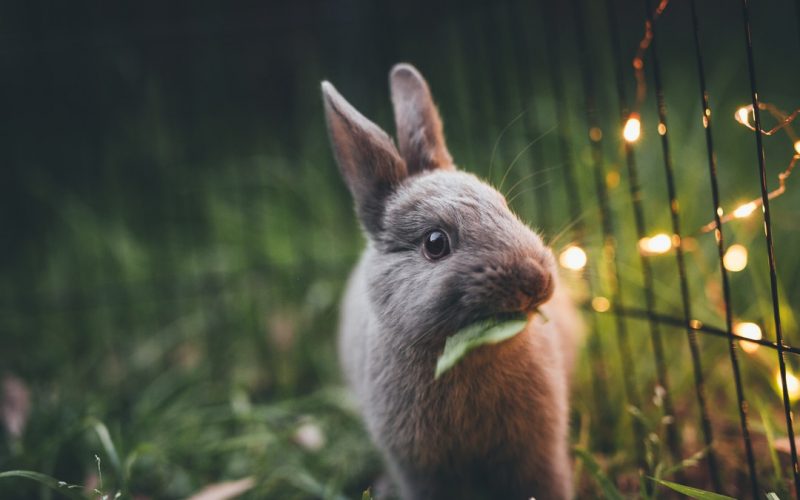Did you know that about 1% of Americans (over six million people) have a pet rabbit in their home?
Whether you’re a proud bunny owner or merely interested in learning more about these wonderful critters, there are plenty of remarkable facts about rabbits that you probably didn’t know.
Let’s get into them!
Baby Rabbits Are Actually Named Kittens
Sure, most people like to use the word bunnies when referring to baby rabbits. But as it turns out, baby rabbits are formally known as kits and kitties.
Adult female rabbits are called does, and adult male rabbits are called bucks.
While the bunny is a cute term of endearment, it’s not the scientific term for the baby.
They Can Eat Their Own Feces
Chances are, you’ve seen a pet dog or cat mess around with their, well, bodily fluids. It’s thoroughly disgusting, right? However, it’s a different story for rabbits. They eat their own poop to process the nutrients a second time.
Yes, this sounds gross (and it is for humans), but the feces can provide a necessary part of the rabbit’s nutrition and diet.
In fact, rabbits produce a specific type of poop known as cecotropes, which are softer than their usual poop pellets. This type of poop is actually meant to be eaten.
Luckily rabbits have fast-acting digestive systems. The bonus to this odd behavior? Fewer carpet messes, right?
They Can Basically See 360 Degrees
A rabbit’s visual system is fascinating. That’s because their eyes are placed on the higher sides of the skull, which allows them to see about 360 degrees. This helps them sense and detect predators in every direction.
However, there is a downside to their field of vision. Rabbits tend to have blind spots directly in front of their faces. They also tend to be farsighted, which means that they can be easily frightened by a predator up above.
Finally, rabbits also have a limited color vision. While they can see better than a human in low light conditions, the image has a poorer resolution.
They Can Jump Quite Impressively
Those powerful, sculpted back legs aren’t just for aesthetic purposes. Rabbits can jump with intense ferocity to quickly and promptly move away from their predators.
In fact, records show that most rabbits can jump over 3 feet. The farthest jump recorded landed over 10 feet.
Some owners enroll their pets in rabbit-jumping competitions where they can proudly show off their animal’s impressive athleticism.
Their Ears Help Cool Them Down
Did you know that a rabbit can rotate his ears approximately 270 degrees? Impressive, right? This range of motion allows them to quickly detect threats from predators from close to over a mile away.
Those adorable floppy ears aren’t just for show-and-tell. They provide the added luxury of providing rabbits with a natural cooldown on hot days.
Carrots Are Not Enough
Even though it’s adorable to watch a rabbit gnaw on a carrot, such a diet isn’t sustainable for the long-term. Carrots have high amounts of sugar. If overeaten, the excess sugar can lead to long-term tooth decay.
In the wild, rabbits prefer munching on grasses, weeds, and clovers. They may eat root vegetables from time to time, but it isn’t a dietary staple.
If you have a pet rabbit, it’s important to give them a well-rounded diet. You don’t want to overdo the sugar and risk tooth or weight problems.
They Communicate with Facial Muscles
Rabbits have a secret language all of their own, and it’s very subtle to the untrained eye.
Most rabbits will clench their facial muscles and alter their body positioning when they are under stress or anxiety. If you aren’t looking into this signs, it’s easy to misunderstand your pet rabbit’s distress.
Unfortunately, this is one of the reasons why some owners have a difficult time with their pets. They don’t know how to interpret their communication, and they may overlook their pet’s discomfort.
They Can Produce A Lot of Children
Females can start breeding at about four months of age, and males can reproduce starting at about seven months.
The average size of a rabbit litter ranges anywhere from 4-12 babies, and the gestation period is only a short 30-day amount.
Translation: in a single year, a female rabbit can reproduce as many as 800 children, grandchildren, and great-grandchildren. Talk about a complicated family tree for an animal that’s lifespan is only about eight years.
Sterilized and neutered rabbits, on the other hand, can live as long as 10-12 years.
They ‘Binky’ When They’re Happy
Rabbits will visibly show you when they are happy. They do this by happily hopping in the air, twisting their body, and kicking their feet.
It’s a joyful sight to watch, and it’s one that makes owning a rabbit a truly gratifying and fun experience.
They Make For Excellent Pets
If you’ve never owned a rabbit before, you may be intrigued by all these awesome facts about these little creatures.
As it turns out, in the right environment, they make for a perfect pet. They’re quiet, but they also come with distinct personalities (some are affectionate and interactive and some are very shy but cuddly).
Moreover, rabbits tend to bond closely with their owners. They start to recognize your voice and your commands.
They’re also great pets for those who live in a small house or apartment. You just need a large enough space for a litter pan and a feeding station for pellets and timothy hay.
Concluding Thoughts on Facts About Rabbits
What’s not to love about these great facts about rabbits? They’re fascinating creatures, and they’re smart, savvy, and charming.
Ar you interested in learning more interesting tidbits about the world around you? Be sure to check out our blog today.
